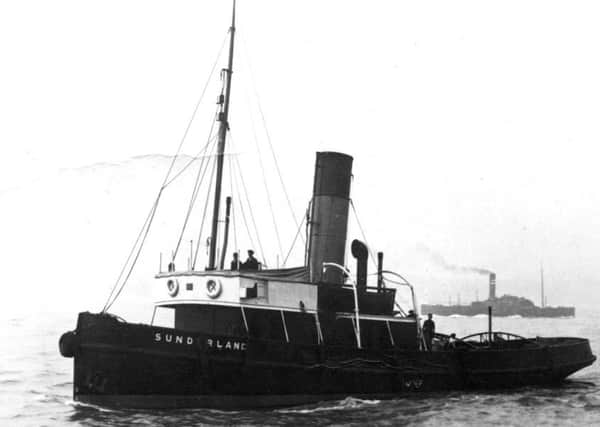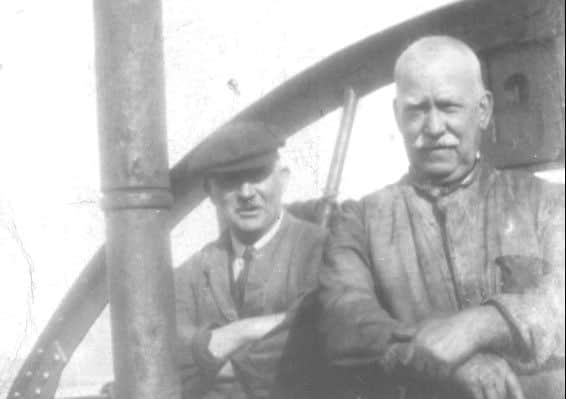ON THE WATERFRONT: Wear tugboat hero


With the western Baltic under German control and the Dardanelles dominated by the Turks, the only practical route to ship war supplies to Russia was via its Arctic ports.
The White Sea port of Archangel played a crucial role in the war effort with over 250,000 tons of munitions and war cargo being discharged each month. To relieve congestion in the main port, authorities constructed additional facilities some three miles upriver at Bakaritsa.
Advertisement
Hide AdAdvertisement
Hide Ad

On November 8, 1916, fate determined that the Wear tug Sunderland would be present at a devastating explosion on Bakaritsa’s waterfront.
Built for Sunderland Towage Co Ltd by JP Rennoldson and Sons Ltd of South Shields in 1914, the 172 tons gross steel screw tug had been hired by the Royal Navy in 1915.
That winter’s day, the 4,036 tons gross steamer Baron Driesen, owned by the Northern Steam Shipping Co of Odessa, was alongside a wharf unloading munitions and other cargo.
Without warning, a series of explosions ripped through the freighter, literally blowing her to pieces.
Advertisement
Hide AdAdvertisement
Hide Ad

Some forty minutes later, another huge blast - probably caused by detonation of ammunition on the quayside - reduced the 4,453 tons gross steamer Earl of Forfar - owned by Marshall and Dobbie of Glasgow - to a floating hulk.
Still with unexploded ordnance in her holds, Earl of Forfar was berthed next to intense shoreside fires. Despite frequent explosions close by and burning embers showering the ship, the crew of Sunderland volunteered to board the blazing Earl of Forfar, which might have blown up at any time.
In doing so, they were able to effect the rescue of a considerable number of wounded and helpless survivors, who otherwise would have died. Nevertheless, many of the crew were killed.
By displaying utmost gallantry and disregarding for their own safety, Lieut Edward Henry Richardson (RNR), 2nd Engineer Christopher Watson (a Wearside man), AB James Dixon Henry and AB Malcolm Thompson were later awarded the Albert Medal for gallantry in saving life at sea.
Advertisement
Hide AdAdvertisement
Hide AdEarl of Forfar later sank but was salvaged by the Russians, repaired and re-entered service. Sailing as Sachsenwald, she was scrapped in 1932.
In 1919, Sunderland was returned to France, Fenwick Tyne and Wear Ltd before being sold to the Mersey Docks and Harbour Board in 1924 and renamed Assistant. Purchased by JH Lamey Ltd of Liverpool in 1946, she was broken up as JH Lamey in 1962.
Christopher Watson’s Albert Medal is among Sunderland Museum’s collections and will be on display to mark the centenary of his heroic deeds next November.